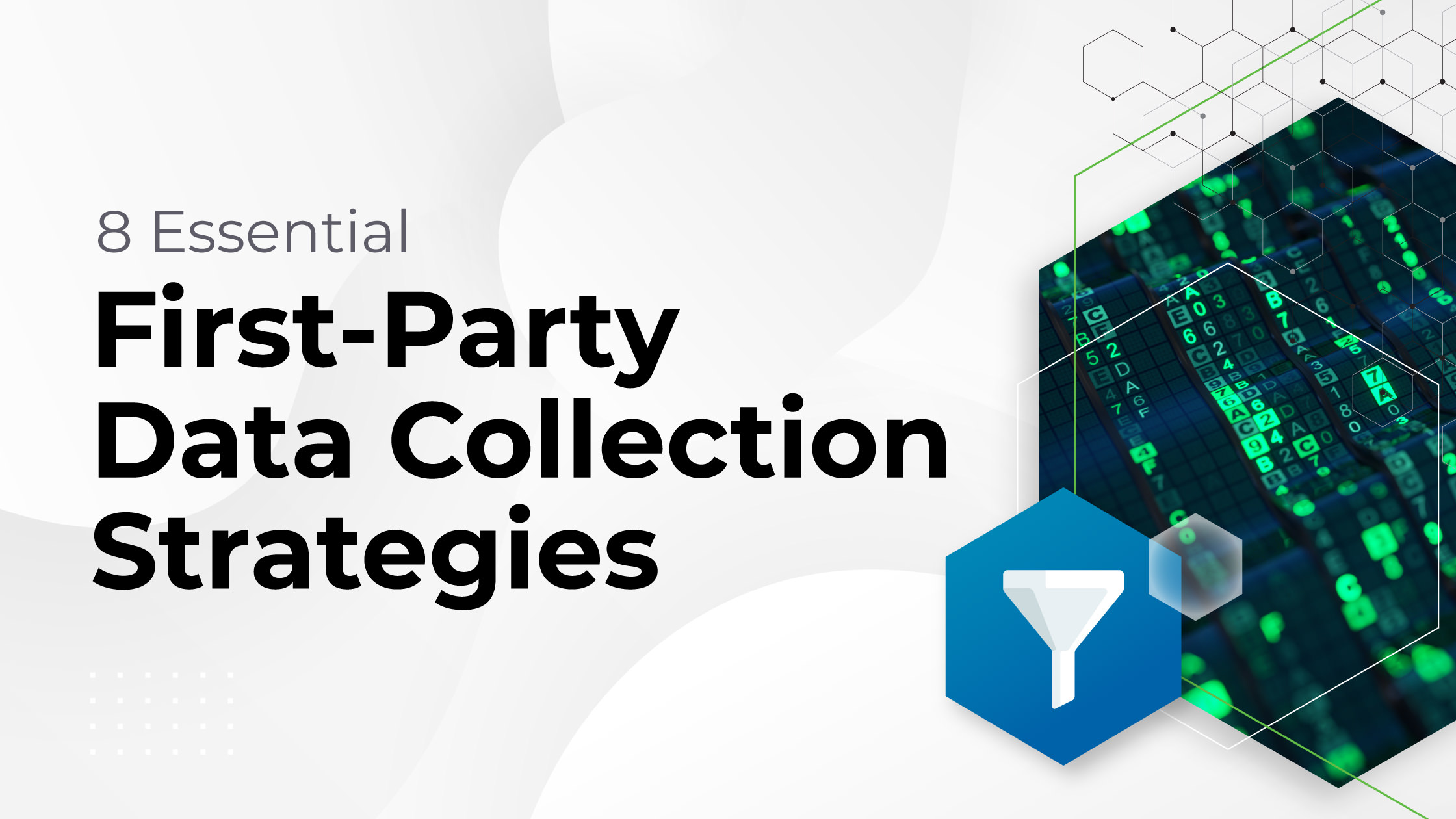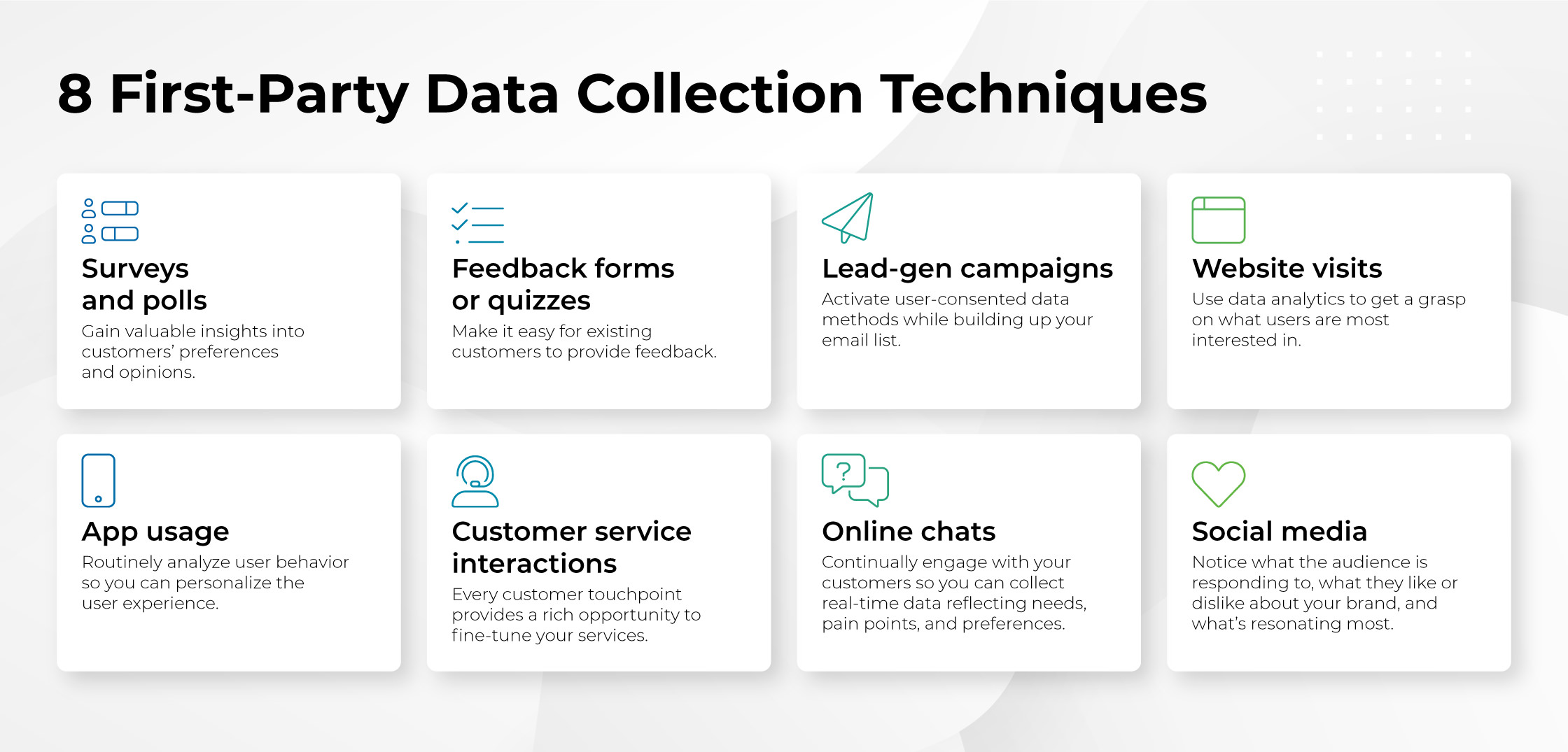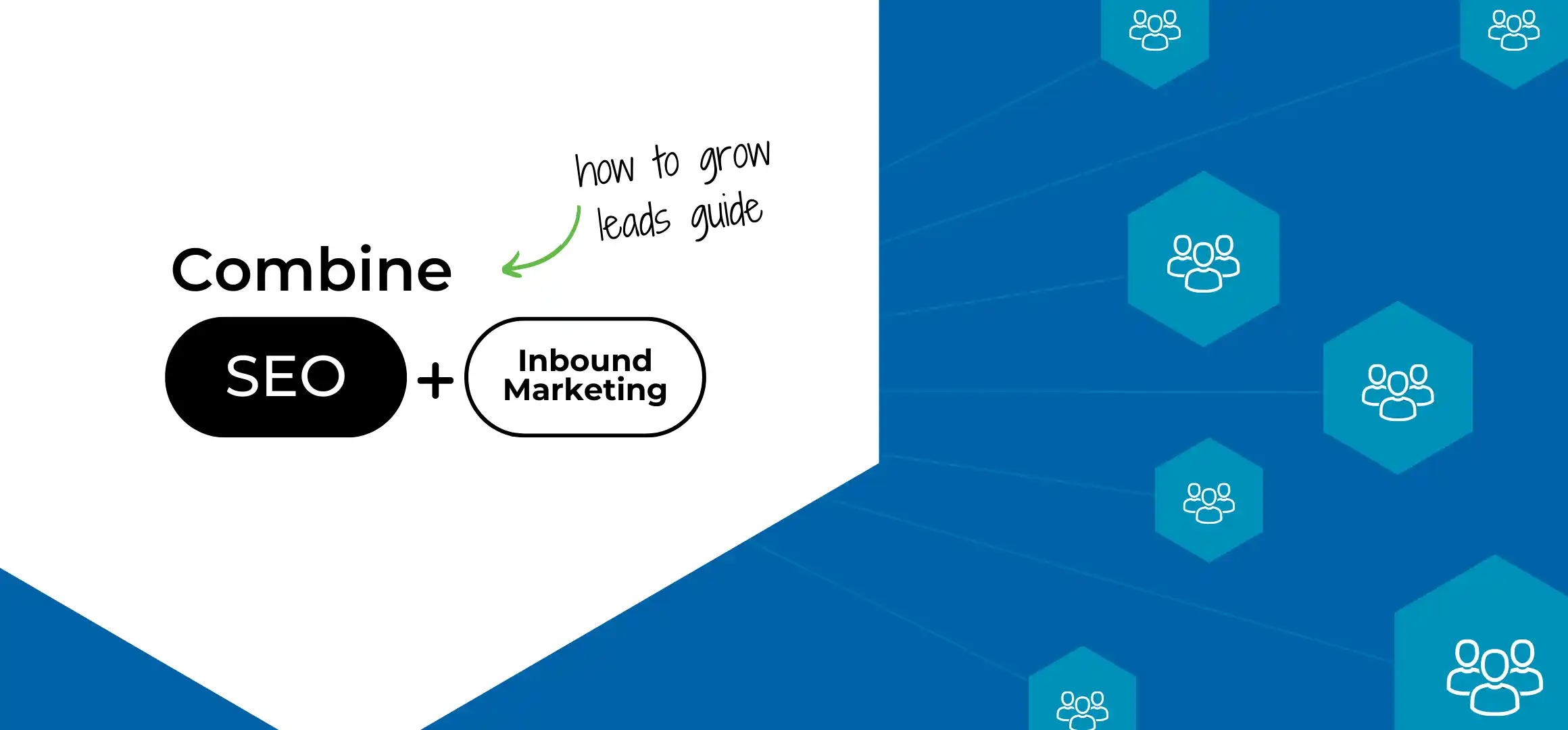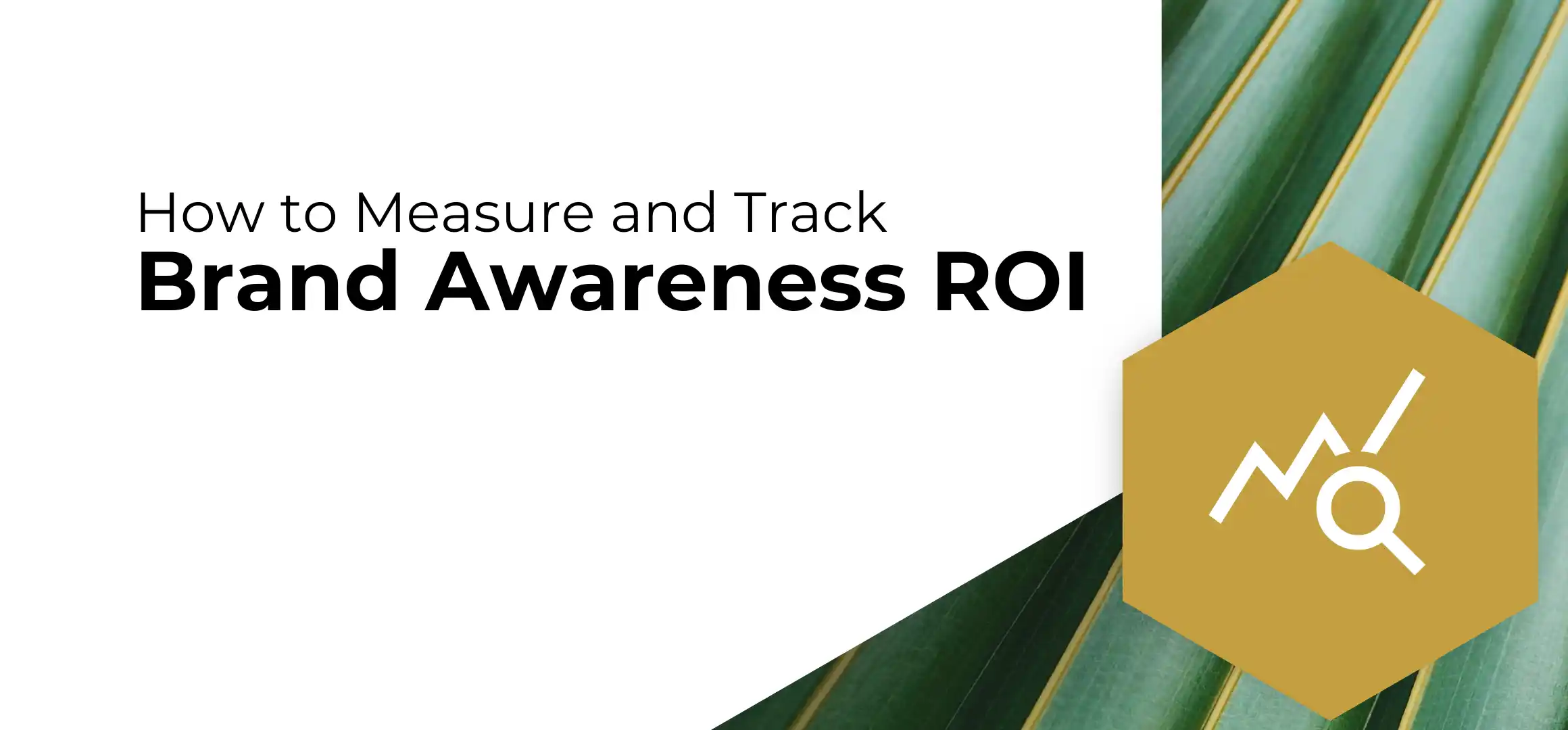
With the upcoming death of third-party cookies, more marketing conversations have centered on first-party data but each brand has to figure out:
- What data to collect
- How to manage it effectively.
A cookie-less data strategy may sound scary, but it shouldn’t be.
Yes, first-party data collection does require a bit more effort upfront, but the result is far more useful, secure, and delivers the performance advantages that brands need to thrive in these changing times. To support you in your first-party data journey, keep reading for:
- Is first-party data really that important? (Unequivocally. We’ll explain why.)
- 8 first-party data collection techniques
- 6 tips for creating a customer-centric first-party data strategy
What is first-party data?
First-party data is information gathered directly from your audience based on their interaction and engagement with your different digital platforms.
This data provides a pointed look into their world and provides insights on your audience’s preferences, behaviors, and interests.
What’s the big deal about first-party data?
First-party data is essential in literally every aspect of growth marketing:
- Developing your overarching digital strategy
- Tailoring your content so you’re creating ONLY for your target audience
- Figuring out your customer personas in the first place
- Building comprehensive user profiles, including non-customer stakeholders with influence over the buying process
- Behavior mapping for all personas
- Creating the customer journey map that all marketing teams revolve around
- Generating top of funnel awareness, which is the key to your revenue goals.
In our opinion, most brands don’t know their customer as deeply as they think they do. The highest-performing brands:
- Found the humility to release “We already know our customer” assumptions
- Don’t rely on anecdotes or siloed data to define customer behavior – verifiable and thoroughly integrated data only
- View customer analysis not as an annual event, but as an ongoing question with answers that evolve periodically.
EVERY company should be collecting first-party data – the most reliable source of information about your customers.
Leveraging first-party data is (should be) the most foundational component of optimizing any marketing strategy. And unlike its sister, Third-Party Data, collecting data from the person who has sole ownership of it carries far fewer privacy concerns.
First-party data vs third-party data
Depending on your product or goal, you may need to collect different types of data. We’re not advocating for a rebuttal of all third-party data; it plays a role.
We’re saying that first-party data offers too much value to be anything but Priority #1.
| First-Party Data | Third-Party Data |
|---|---|
| Collecting data on your own channels, directly from your audience. | Collecting data from channels you don’t own. This type of data is not nearly as informative or authentic as first-party data, and even when you buy it, it’s never truly yours. You should not be solely relying on third party data EVER. Third-party cookies are almost gone, which means now is the time to adjust your strategy to collect first party data directly from your consumers. |
8 first-party data collection techniques
You can’t just jump in and start collecting data without some sort of direction. Having a roadmap is key to collecting the data correctly and effectively so you can use it to your advantage.
Some strategies for how to collect first-party data include:
- Surveys and polls: Engage your audience with surveys and polls to gain valuable insights into their preferences and opinions. Since this is information provided to you willingly and directly from the customer, this is considered zero-party data.
- Feedback forms or quizzes: Make it easy for existing customers to provide feedback (either via overt feedback forms) or quizzes that deliver value.
- Lead-gen campaigns: This is a great step for activation of user-consented data methods, while building up your email list so you can continue to nurture them.
- Website visits: Use data analytics to track website visits, monitor behavior, and get a grasp on what users are most interested in. This information supports content customization and user experience enhancements. And with all the recently increased privacy regulations, make sure you have proper site cookie consent management.
- App usage: If you offer a customer-facing application, routinely analyze user behavior there so you can personalize the user’s experience while collecting valuable data.
- Customer service interactions: Every customer touchpoint (including subscriber opt-out requests) provides a rich opportunity to fine tune your services and make them better.
- Online chats: Make sure to continually engage with your customers through online chats so you can collect real-time data reflecting their needs, pain points, and preferences.
- Social media: Don’t underestimate the source material available via social media. Notice what the audience is responding to, what they like or dislike about your brand, and what’s resonating most. This information can be integrated into your customer data platform solutions for a comprehensive view of your audience.
- Consider deploying server to server first party analytics tracking to send richer first party signals to Facebook, Google and other marketing platforms, to reduce your reliance on third party cookies.

And there’s more… Other first-party data collection strategies to consider are:
- Browser local storage and session storage
- User registration
- Tracking user IDs
- Appending marketing UTM parameters to campaign links
- Single sign-on
- Progressive profiling
- Event-based tracking
- Content sharing
- Warranty or product registration, and more.
These are all excellent sources for data signals, which are the recordable online customer actions that provide insight into your audience and their intent.
Collecting information from channels like these is all part of first-party data enrichment, and is critical so you can use it for data-driven decision making when it comes to your products and first party data marketing.
The combination of options should be curated for each brand’s product/service and individual performance objectives. Work closely with your marketing partner to identify the right mix of elements for your target audience and for your business.
6 tips for building a first-party data strategy that aligns with your customer journey

Tip #1: Clearly define business goals and objectives
Make sure you have precisely defined what you hope to achieve with your first-party data. Examples might be:
- Build awareness
- Increase customer retention rates
Tip #2: Recognize your target audience segments and their data
Based on your objectives, you’ll need to segment your audience and identify the data you need from each segment in order to more effectively target your marketing efforts. The more narrow and specific you can be, the more efficient you can be with your spending as well.
- Your current funnel is likely already collecting data from beginning to end. But many brands are under-leveraging their existing data stores largely because they don’t realize how comprehensive their data actually is, or don’t how to extract maximum value from it.
- Consider data collection that spans all three sub-categories of upper funnel brand awareness:
- Unaided awareness
- Aided awareness
- Top-of-mind awareness.
Tip #3: Map out your customer’s journey
A clear customer journey map visualizes exactly what your customer is seeing and doing throughout your sales funnel. This supports clarity and the accuracy of your data collection points across the various touchpoints. Explore our deep dive on journey mapping here:
How to Map Your Customer’s Journey
Explore our comprehensive guide on creating customer journey maps. Learn practical steps to understand and enhance your customer’s path. Be informed.
Tip #4: Optimize your CDP to efficiently manage data
Too many brands grab handfuls of data and lift it in the air in celebration, like they’re now standing on the victory podium. “We’ve got the data! Woot woot!”
Except… Winning isn’t just about having data.
How that data is managed is critical to ensure accuracy, secureness, compliance with privacy regulations, and a high degree of organization that makes the data strategically useful.
A well-optimized customer data platform (CDP) is the best way to capture, retain, and organize every customer (and non-customer) brand interaction across every touchpoint.
REMINDER: Over-reliance on individual platforms is no longer sustainable. Yes, you can access important data from places like Meta and Google, but they don’t make it easy for you to layer their data on top of all the other data sets that have relevance to your customer journey. This is why having marketing analytics expertise on your team is now non-negotiable.
Tip #5: Integrate data
Collecting data is the first step. Next, you need to integrate it, while removing data silos. Gathering the right data, analyzing it thoroughly, and using that analysis to tailor your marketing strategy is the name of this game.
Data integration happens at the CDP level, as mentioned above, and again inside your customer relationship management (CRM) tool, which is what houses individual customer records, including their sales interactions with the brand.
Think of the CDP as the prism of your brand and its ecosystem, and think of the CRM as the prism of individual customers and their perceptions of your brand.
Tip #6: Measure your success
What does success look like for you and your brand? That question can’t be answered without regular measurement intervals. Establish your primary, secondary, and tertiary KPIs at the outset and routinely measure them against what you find in your data so you know what needs to change, if anything.
TL;DR on first-party data
- No marketing asset supersedes the value of first-party data.
- Many brands’ existing funnel activity contains a treasure trove of data that’s being improperly managed and analyzed (in most cases, ignored entirely).
- Every marketing touchpoint is an opportunity to collect valuable data and use those insights to enhance the customer experience.
- Effective first-party data management depends on collecting, analyzing, and implementing data correctly in order to unlock its full potential.
- Successful first-party data management requires expert integration of your CDP and CRM.





